At Kinetic319, we believe strongly in listening to what customers have to say. We recently conducted a survey of 322 different consumers to get an idea of their plans for the 2025 holiday shopping season. This blog post was created based on the findings of that survey.
Every year, the holiday shopping season seems to start just a little bit earlier. The once-sacred tradition of Black Friday doorbusters and Cyber Monday flash sales no longer holds the monopoly on holiday spending.
If you’re a business banking on these mega-sales alone, it’s time to rethink your strategy.
Kinetic319 recently conducted a survey of 322 holiday shoppers, uncovering some eye-opening insights (insights that surprised even us!) about how purchasing behaviors have evolved.
For instance, did you know that only 1 in 5 shoppers wait until Black Friday or Cyber Monday to begin shopping? If you want to capture the attention (and wallets) of the other 80%, preparation needs to be at the top of your to-do list.
Here’s why shoppers are getting a head start on their holiday lists and, more importantly, how businesses like yours can prepare for this shift.
Why Shoppers Are Starting Early
While we don’t have a crystal ball that reads the minds of holiday shoppers (though wouldn’t that be nice!), there are a few likely culprits behind the early-bird-gets-the-worm surge of the last few years.
The gradual extension of the holiday shopping season likely has to do with some of the following factors:
1. Avoiding the Stress of Last-Minute Shopping
Holiday shopping should feel magical. For many, though, it’s not. It’s simply stressful.
Out-of-stock items, packed stores, and delivery delays can turn any cheerful shopping trip into pure chaos. According to our survey, 42% of shoppers cited out-of-stock items and 37% noted shipping delays as major frustrations. Starting early offers peace of mind and makes sure no one gets left with empty stockings.
Online shopping options have offered some added convenience, but they’re not without challenges, either. Longer-than-expected shipping windows during peak season push customers to plan weeks, if not months, in advance.
The takeaway: brands that offer clear and easy delivery timelines can stand out. If you haven't already, now’s the time to fine-tune your logistics communications.
2. The World of Deals Starts Early
Retailers have taken note of this trend and are dropping discounts earlier than ever. With 45% of shoppers beginning before November and nearly 30% starting in November, brands that wait for Thanksgiving week are missing out on prime spending time (PS: our survey wasn’t the only one to discover these findings. The National Retail Federation posted similar trends for 2024).
Marketplaces like Amazon and Walmart typically offer early promotional events (think “Fall Prime Days” or mid-October flash sales) which set the tone. Competing for visibility during this extended discount window means businesses must plan deals well in advance while pacing promotions strategically through Q4.
3. The Budget Factor
Budgets matter, and spreading out purchases helps shoppers stick to theirs. Kinetic319’s research revealed roughly 56% of shoppers plan to spend between $251 and $750 on gifts (a significant chunk of change for most households). By shopping earlier, consumers have more time to spread out costs without draining their bank accounts in one go.
Appealing to budget-conscious consumers could give your business a competitive edge. Think payment plans, personalized discount offers, or budget-themed gift guides.
Preparing Your Business for Early Shoppers
Now that you know the “why,” here’s the “how”: how to maximize your holiday shopping marketing strategy so you can attract buyers regardless of what month the calendar reads.
1. Get Listed Where Shoppers Search
Holiday shoppers are navigating a sea of buying options. According to our survey, 73.6% of respondents plan to shop on Amazon, while 62% are hitting large retailers like Target or Walmart. Other notable platforms include local shops at 50.62%, brand websites at 39.75%, and marketplace platforms like Etsy at 31.99%.
Your business plays a numbers game here. If you’re not visible on high-traffic platforms, you’re missing out on the majority of holiday shoppers.
Some tips:
- Optimize your Amazon or other marketplace listings with clear visuals, bullet points, and engaging descriptions.
- Refresh your website for mobile responsiveness. Over 27.64% of shoppers, according to our survey, plan to use apps or mobile browsers to make purchases, so a clunky, non-mobile-optimized experience could send them clicking elsewhere.
- Strengthen your local SEO game. Local and independent shops remain a key draw, particularly in urban and suburban communities craving personalized experiences.
2. Revisit Promotion Timing and Messaging
Shoppers are already searching for deals well before November, but they're also picky about what they buy. With 57% of shoppers citing “high prices” as a top frustration in our survey, the pressure is on for brands to balance value with perceived quality.
Don’t wait until Black Friday to drop your first promotions. Instead, launch staggered mini-campaigns starting in October that focus on limited-time deals or exclusive early-bird offers.
Also, focus on transparency in pricing. Hidden fees or unclear discounts are major turn-offs.
Finally, highlight bundles that solve gifting dilemmas for uncertain shoppers (37% of our survey respondents admitted they struggle with what to buy). Bundle similar products and market them as ready-made solutions for hard-to-shop-for folks.
3. Showcase Customer Validation
Influence matters—a lot! Among the shoppers we surveyed, 53% said online reviews drive decisions, followed by 59% trusting search results and 41% referencing holiday gift guides. Consumers want social proof before committing.
Your action plan:
- Invest in review management. Encourage happy customers to leave glowing testimonials, which can make or break purchasing decisions down the line.
- Collaborate with bloggers or media outlets to appear in coveted “Best Holiday Gift Guides.”
- Revamp your SEO strategy to ensure you're ranking for relevant holiday queries, like “Best Gifts for Teens Under $50” or “Affordable Stocking Stuffers That Impress.”
Remember, your customers trust online reviews almost as much (if not as much) as personal recommendations. Take advantage of your built-in cheer squad and get your name out there by leaning on customer reviews!
4. Address the Top Frustrations
The holiday shopping season isn’t just about capitalizing on consumer excitement, but solving their biggest pain points. Our survey revealed critical annoyances (like high prices, hard-to-navigate websites, and tricky return policies) that could cause shoppers to abandon their cart in frustration.
Some tips?
Offer free, no-hassle returns during the holidays, especially on big-ticket items.
Also, take the time to audit your site’s user experience (UX) for ease of navigation. Confusing categories, slow load times, or overly busy pages can send people packing.
Finally, track alerts for inventory levels to reduce stock-outs during peak demand and offer alternatives when items sell out.
5. Build Strong Email Campaigns
Believe it or not, 36% of consumers in our survey cited email as an important factor in their shopping decisions.
Retailer emails perform best when they balance helpfulness with exclusivity. Plus, they’re a fantastic way to target early shoppers who like to snag deals ahead of the crowd.
Some tips to make the most of your email campaigns:
- Segment your email audience. Send customized campaigns tailored to big spenders versus bargain hunters.
- Create urgency by introducing countdown timers or “limited quantity” updates.
- Use your email list to promote insider previews or early discounts for loyal customers.
Wrapping Up Your Holiday Season Success
Holiday shopping has turned into a marathon rather than a sprint, and businesses can’t afford to lag behind. With 45% of shoppers starting before November, brands that focus solely on Black Friday might as well leave money on the table.
By understanding why shoppers are starting early, proactively addressing their frustrations, and aligning your holiday strategy with both their behaviors and their budgets, you’ll not only meet their needs. You’ll exceed their expectations.
It’s a tall order, for sure, but it’s one you don’t have to tackle alone.
Want to maximize your holiday revenue this year? Partner with Kinetic319. Our team of digital marketing experts can help you design and execute a holiday-ready strategy that turns browsers into buyers.
From email marketing to SEO optimization, we bring all the tools you need to thrive in this (extended) shopping season.

